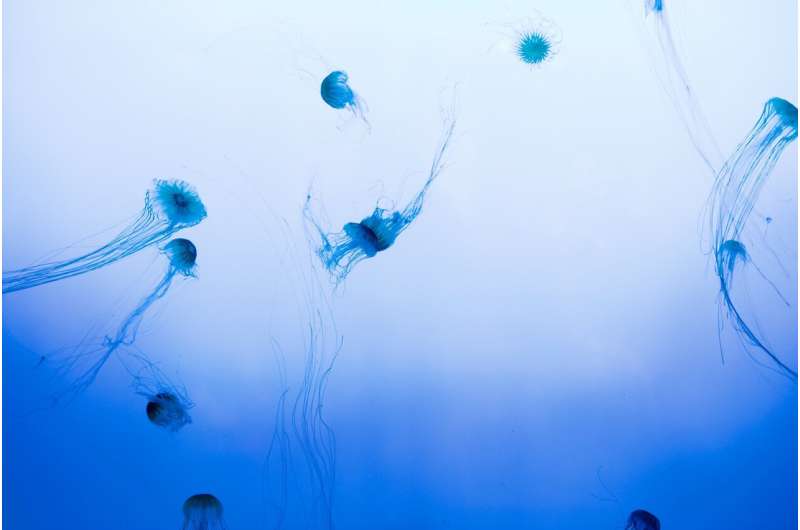This article has been reviewed according to Science X's editorial process and policies. Editors have highlighted the following attributes while ensuring the content's credibility:
fact-checked
peer-reviewed publication
trusted source
proofread
Jet-propelled tunicates pump carbon through the oceans

Salps are transparent, tube-shaped jellies well known for their propulsive jetting movements. According to new research, they also take quite a bit of carbon along for the ride.
Populations of these gelatinous zooplankton—part of the subphylum Tunicata, or sea squirts—are episodic and patchy. Sometimes, though, they "bloom" and form huge aggregations. En masse, their feces, daily migrations up and down the water column, and sinking carcasses sequester carbon into the deep sea.
In a recently published study, Steinberg et al. show that salp-related carbon sequestration is especially prominent in retentive or low-export food webs. The authors sampled a full suite of salp-related carbon export processes during a 2018 Salpa aspera bloom in the subarctic northeastern Pacific Ocean.
Aboard R/V Roger Revelle and R/V Sally Ride, the researchers deployed cameras and cast nets up to 1,000 meters deep during day and night. They lugged up salps and other zooplankton, sorted and weighed their catch, and trapped sinking salp feces. They also conducted onboard experiments and incorporated all of their data into a model to approximate carbon export in the study zone. The team repeated this process across three 8-day sampling cycles.
The scientists discovered that the salp blooms significantly affected local biogeochemistry. Salps increased the proportion of net primary production exported as particulate organic carbon below the euphotic zone (the ocean region bright enough to support photosynthesis) 1.5-fold. In addition, during blooms, the proportion of this particulate organic carbon export remaining 100 meters below the euphotic zone increased by a factor of 2.6.
With increasing recognition of their role in the biological carbon pump, widespread use of new technologies for salp detection and sampling will lead to a better understanding of the tunicate's unique role in the ocean ecosystem.
The research is published in the journal Global Biogeochemical Cycles.
More information: Deborah K. Steinberg et al, The Outsized Role of Salps in Carbon Export in the Subarctic Northeast Pacific Ocean, Global Biogeochemical Cycles (2022). DOI: 10.1029/2022GB007523
Journal information: Global Biogeochemical Cycles
Provided by American Geophysical Union
This story is republished courtesy of Eos, hosted by the American Geophysical Union. Read the original storyhere.



















